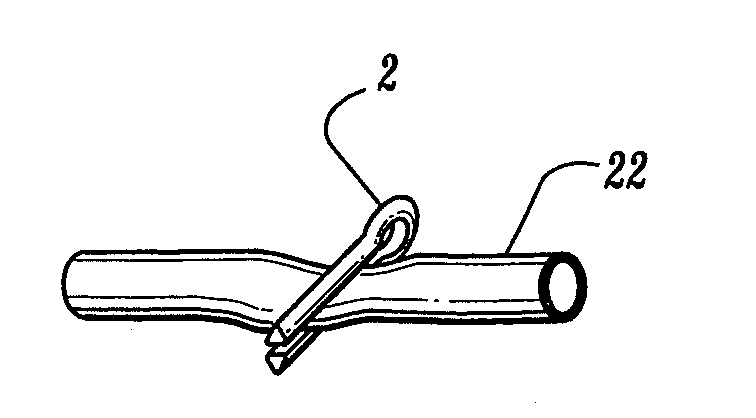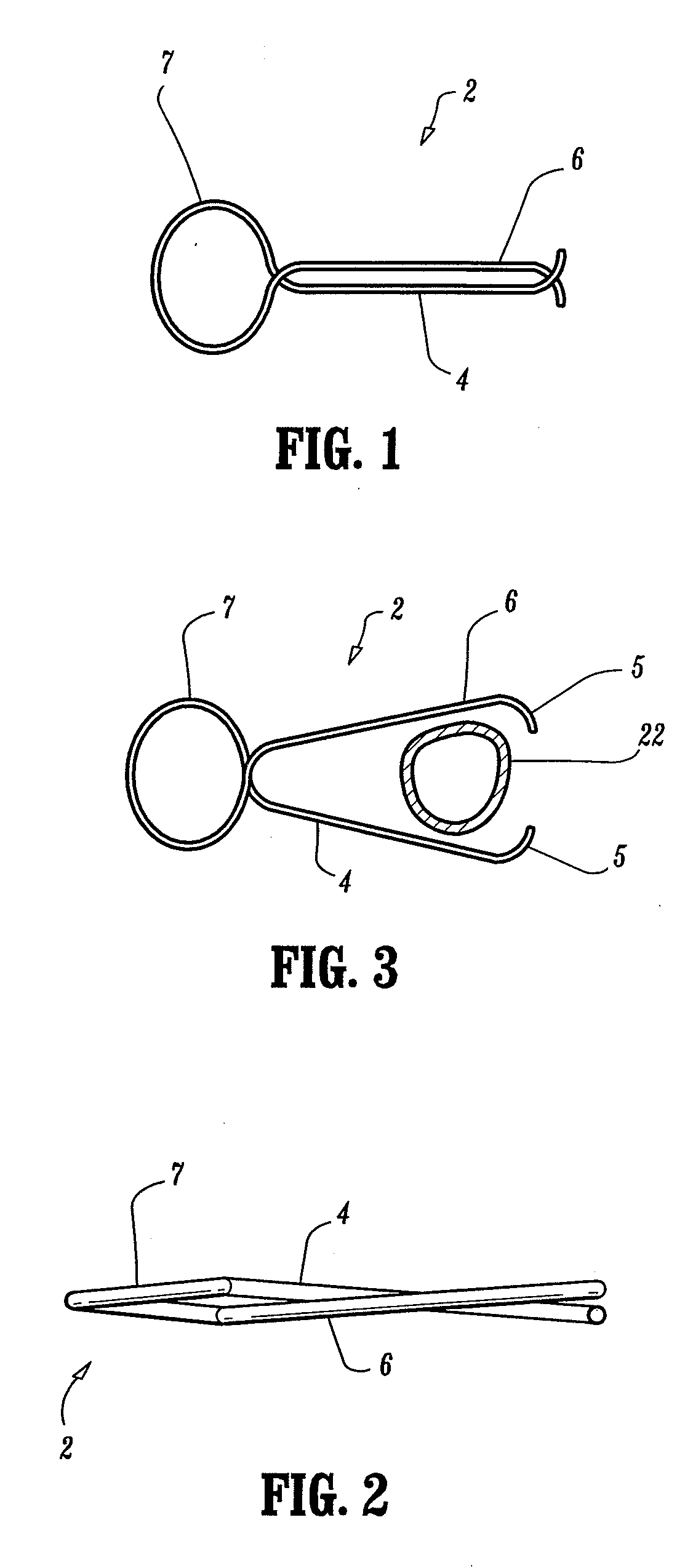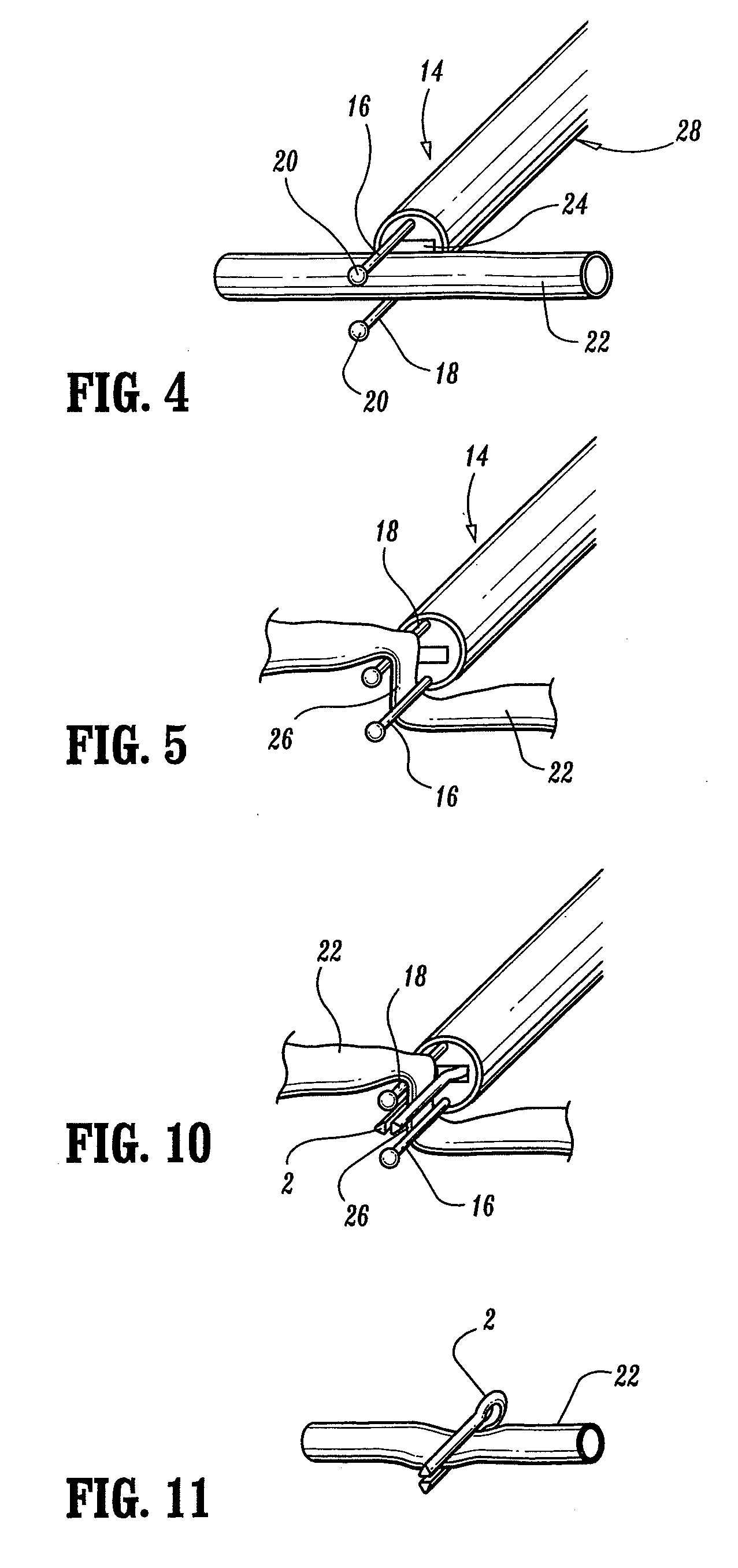Method for blood vessel clip application
a blood vessel and clip technology, applied in the field of minimally invasive vascular surgery, can solve the problems of requiring patients to suffer, permanent deformation, and bulky surgical instruments in the pas
- Summary
- Abstract
- Description
- Claims
- Application Information
AI Technical Summary
Benefits of technology
Problems solved by technology
Method used
Image
Examples
Embodiment Construction
[0039]Referring to FIG. 1, a preferred embodiment of a blood vessel clip 2 can be seen. A first leg 4 and a second leg 6 are connected by a head 7. In a preferred embodiment, the head 7 is substantially circular. A top view of the preferred blood vessel clip 2 can be seen in FIG. 1, and a side view of the blood vessel clip 2 can be seen in FIG. 2. As can be seen, the first leg 4 crosses over the second leg 6. However, it is equally effective to manufacture the blood vessel clip 2 such that the first leg 4 crosses under the second leg 6. In a preferred embodiment, the proximal end of the first leg 4 is located substantially above the proximal end of the second leg 6, and the distal end of the first leg 4 is located substantially below the distal end of the second leg 6. By arranging the first leg 4 and the second leg 6 in this manner, the lateral stability of the blood vessel clip 2 is increased.
[0040]In a preferred embodiment, the blood vessel clip 2 comprises a spring-quality mater...
PUM
| Property | Measurement | Unit |
|---|---|---|
| Force | aaaaa | aaaaa |
| Shape | aaaaa | aaaaa |
Abstract
Description
Claims
Application Information
 Login to View More
Login to View More - R&D
- Intellectual Property
- Life Sciences
- Materials
- Tech Scout
- Unparalleled Data Quality
- Higher Quality Content
- 60% Fewer Hallucinations
Browse by: Latest US Patents, China's latest patents, Technical Efficacy Thesaurus, Application Domain, Technology Topic, Popular Technical Reports.
© 2025 PatSnap. All rights reserved.Legal|Privacy policy|Modern Slavery Act Transparency Statement|Sitemap|About US| Contact US: help@patsnap.com



